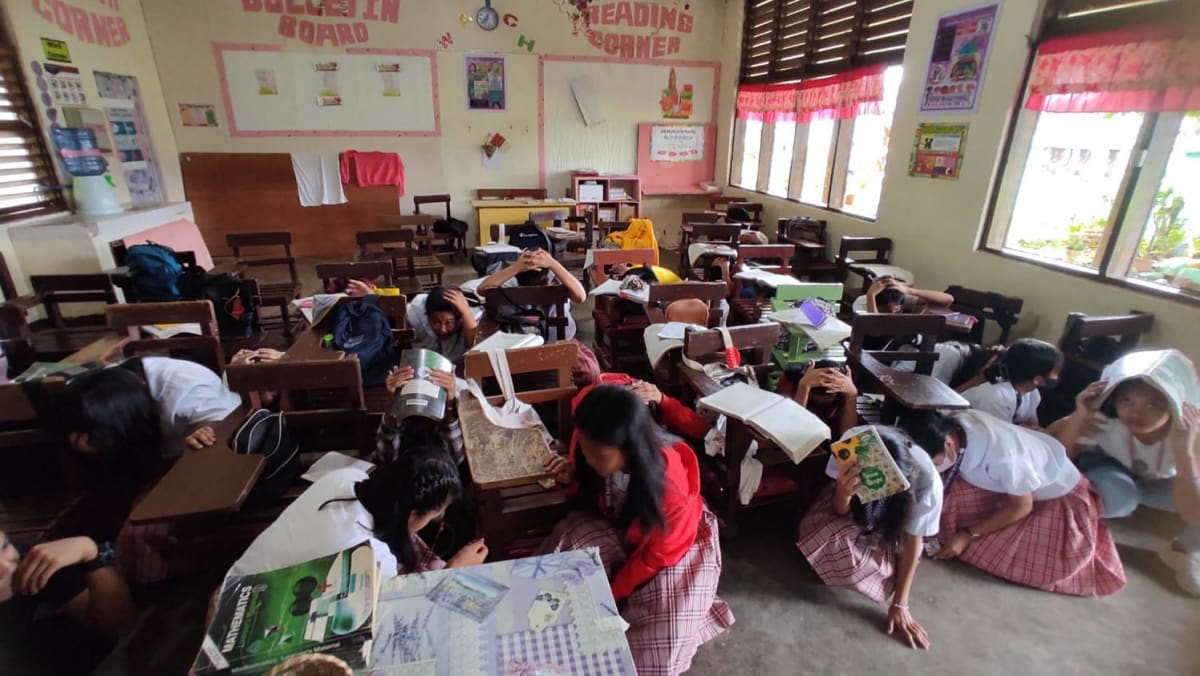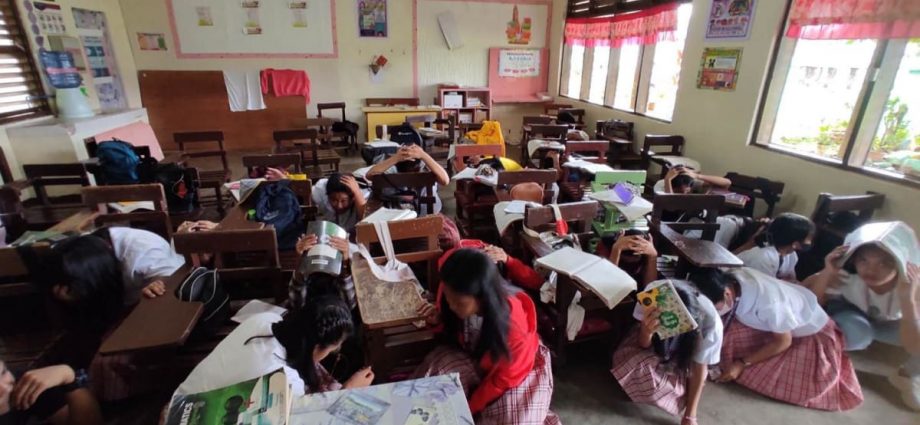
A video posted on Facebook and verified by AFP showed high school students in Mawab municipality, less than 30km from Maragusan, squealing as they exited a two-storey building and gathered outside.
Phoebe Alberto and her colleagues at the disaster office in New Bataan municipality, adjacent to Maragusan, fled their building as it shook.
“We are still assessing damage to our building, if any,” said Alberto.
The quake was felt on the other side of the mountains in the coastal municipality of Caraga and sent people running outdoors, said civil defence officer Jessielyn Capina.
Quakes are a daily occurrence in the Philippines, which sits along the Pacific “Ring of Fire”, an arc of intense seismic as well as volcanic activity that stretches from Japan through Southeast Asia and across the Pacific basin.
Most of the earthquakes are too weak to be felt by humans, but strong and destructive ones come at random with no technology available to predict when and where they will happen.
The nation’s civil defence office regularly holds drills simulating earthquake scenarios along active fault lines.
The last major quake was in October in the northern Philippines.
The 6.4-magnitude earthquake hit the mountain town of Dolores in Abra province, injuring several people, damaging buildings and cutting power to most of the region.
A 7.0-magnitude quake in mountainous Abra last July triggered landslides and ground fissures, killing 11 people and injuring several hundred.

